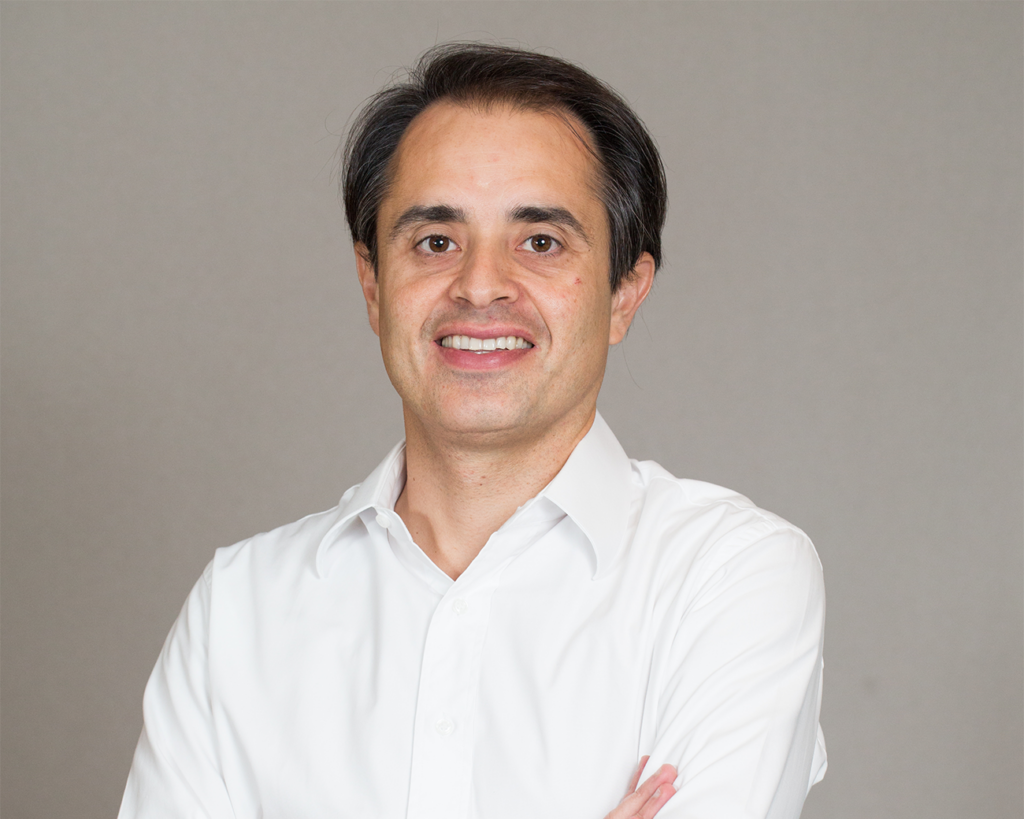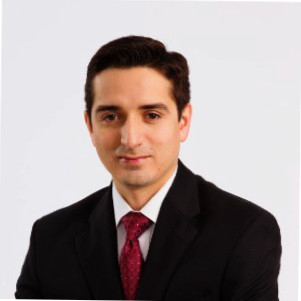Member Profiles
An Interview with Enrique Bascur, CVCI
17 November 2011

Enrique Bascur, Managing Director and Region Head (Latin America) of Citi Venture Capital International (CVCI) spoke with LAVCA about the firm’s continued focus on emerging markets private equity and Latin America specifically.
 LAVCA: Please give us some background on CVCI.
LAVCA: Please give us some background on CVCI.
Bascur: Citi Venture Capital International (CVCI) is a leader in global emerging markets private equity, investing in companies with compelling growth prospects across Latin America, Asia, emerging Europe and Africa. Over the last decade CVCI has invested globally approximately US$5.2 billion with realized exits of US$ 5.9 billion. CVCI currently has $7.2 billion AUM, and is managing three funds: CVCI Growth Fund I, CVCI Growth Fund II and the CVCI Africa Fund.
In Latin America over the past 10 years, excluding Brazil, we have invested US$175 million and realized US$678 million through exits, and another US$652 million that form our current portfolio. In addition we have realized US$1.6 billion through exits in Brazil.
LAVCA: Tell us about your background. How did you become involved with CVCI?
Bascur: I developed a career in investment banking in Latin America and was based in New York until 1997, when I joined Citi in Chile and took responsibility for a local private equity operation that was established in the early 90s. This unit became part of CVCI in 2001 when it consolidated all the emerging markets practices Citi had around the world. After a very successful period in Chile, I moved back to New York in 2005 to run the region as we expanded our third party fund activity.
LAVCA: CVCI has done investments across a broad range of sectors, from energy to aquaculture to gaming/casinos. What is your strategy to successfully invest in such distinct areas? How does this fit into your long-term strategy in the region?
Bascur: CVCI’s investment team has significant experience in select investment themes and industries that play to the strengths of emerging markets, including consumer demand driven industries, infrastructure driven businesses, industry consolidation, cross border outsourcing and energy.
The actual sectors of expertise that have developed around these themes vary according to region. In Latin America, the industries are more related to natural resources and energy, while in Asia they relate more to manufacturing. All regions are seeing opportunities directly related to the emergence of a consumer class and infrastructure growth.
As such, we have a strong expertise in light manufacturing in China, pharmaceuticals in India and emerging Europe, energy in Latin America, construction and real estate across most geographies, IT and business outsourcing in the intersection of the developed world and the emerging markets.
LAVCA: Did the financial crisis affect your investment strategy or are the current economic conditions changing your investment criteria at all?
Bascur: Economic conditions are one of the elements that affect our investment strategy; however a downturn is more likely to create opportunities than limit them. A crisis is a time of adjustment for many portfolios and interesting assets previously unavailable come to the market at reasonable valuations. Once you factor in the economic conditions and reduced leverage availability into realistic valuations, attractive deals can be completed. The difficulty lies in arriving to common ground on these valuations with sellers.
LAVCA: Which geographies are most interesting to CVCI right now? Why?
Bascur: CVCI is constantly looking for growth investment opportunities in emerging markets, particularly in Latin America, India, China, Asia Pacific and emerging Europe.
In Latin America our focus has been Brazil, Mexico, Colombia, Peru and Chile. While we have a renewed focus on Brazil, we believe there are attractive investment opportunities in all of our countries of focus.
LAVCA: There’s been a lot of talk about whether or not Brazil is overheating. Do you feel Brazil is a less attractive market today when compared with other regional markets, such as Mexico or Colombia?
Bascur: Brazil is a large and active market that offers many opportunities. The fact that we saw high valuations in 2010 reflects increased confidence in the country and many new entrants to the market that see Brazil as a geography they want to have exposure to in their portfolios. We believe there are transactions that can be performed in attractive terms in Brazil and our approach as a global firm is to look at their relative attractiveness, comparing valuations and expected returns across emerging markets. High valuations can be a positive factor when they are validated from a global perspective, and are based on real advantages such as access to sustainable growth for companies, availability of management, sensible tax regimes, stable rules of the game, strong court systems and other real business environment positives.
LAVCA: CVCI has been investing in EM PE for over a decade. With the recent influx of new investors in Latin America specifically, what effect have you seen on deals, valuations, etc?
Bascur: Higher GDP growth in emerging markets countries compared to western developed economies is driving foreign and local investors seeking growth investment alternatives to pursue investing opportunities in Latin America and most noticeably in Brazil. The flow of funds and eagerness to invest in the region are pushing valuations up. Sale processes have become more competitive with larger and more sophisticated players contending for investment opportunities. However, we often see the highest prices are still paid by local investors, both financial and strategic, an encouraging sign that the appetite is not purely driven by the foreign flow of funds. Throughout this period, experienced fund managers have continued to maintain pricing discipline.
LAVCA: What is your most recent investment? What unique actions are you taking to add value to the company from an operational standpoint?
Bascur: Our most recent investment in Latin America was in March 2011. CVCI acquired 31.9% of Transportadora de Gas Internacional SA (“TGI”) and injected $400 million in fresh capital, partnering with Grupo de Energia de Bogota (EEB) to jointly own the largest Colombian natural gas transportation company. TGI has a network of 3,774 kilometers (2,345 miles) of pipelines with a total delivery capacity of 583 million cubic feet per day and is the backbone of Colombia’s natural gas system.
CVCI is working closely with management and our partners at EEB to further develop the company’s international expansion plan, continuing to strengthen its capital structure as well as benchmarking the company with world class governance practices and management structures.
LAVCA: What are you hearing from LPs about their willingness to invest in Latin America vs. other markets like China or India?
Bascur: LPs have different preferences and strategies, but in general we have seen a heightened interest in investing in the region, not necessarily in competition with China or India but more as a complement to investing there. It appears that many LPs have realized that the same drivers of the growth in Asia are driving growth in a number of countries in Latin America. This is particularly true for the South American countries, where there is greater connection with the Asian growth drivers, given South America’s strength in natural resources.
LPs based in Asia are among those who have interest in the region, and we see a growing flow from certain emerging markets to other selected emerging markets, both strategic and financial.
LAVCA: Tell us about your most recent exit- how did that go, what was your strategy?
Bascur: In our latest Latin American exit, CVCI partially divested its 22.7% ownership in Exalmar, a leading producer of fishmeal and fish oil in Peru through an IPO in November 2010 as well as a block trade last September. In total we have collected approximately $70 million in proceeds while we still keep a 5% ownership in the company. Exalmar continues to successfully execute its growth strategy while showing very positive operating and financial performance. We expect to exit our final portion in a capital market transaction in the near future.
You may be interested in...
-

Luciana Antonini Ribeiro, eB Capital
Executive: Luciana Antonini Ribeiro, Co-Founder and CIO Member Name: eB Capital Year...
-

Cristiano Gioia Lauretti, Kinea Private Equity
Member: Kinea Executive: Cristiano Gioia Lauretti, Head of Private Equity HQ: São...
-

Maria Pia Iannariello, MGM Innova Capital
LAVCA recently spoke with Maria Pia Iannariello, Co-Founder & COO of MGM Innova Capital,...
-

Rafael Ramirez, Portfolio Manager, Alaska Permanent Fund Corporation
LAVCA recently spoke with Rafael Ramirez, Portfolio Manager– Private Equity &...